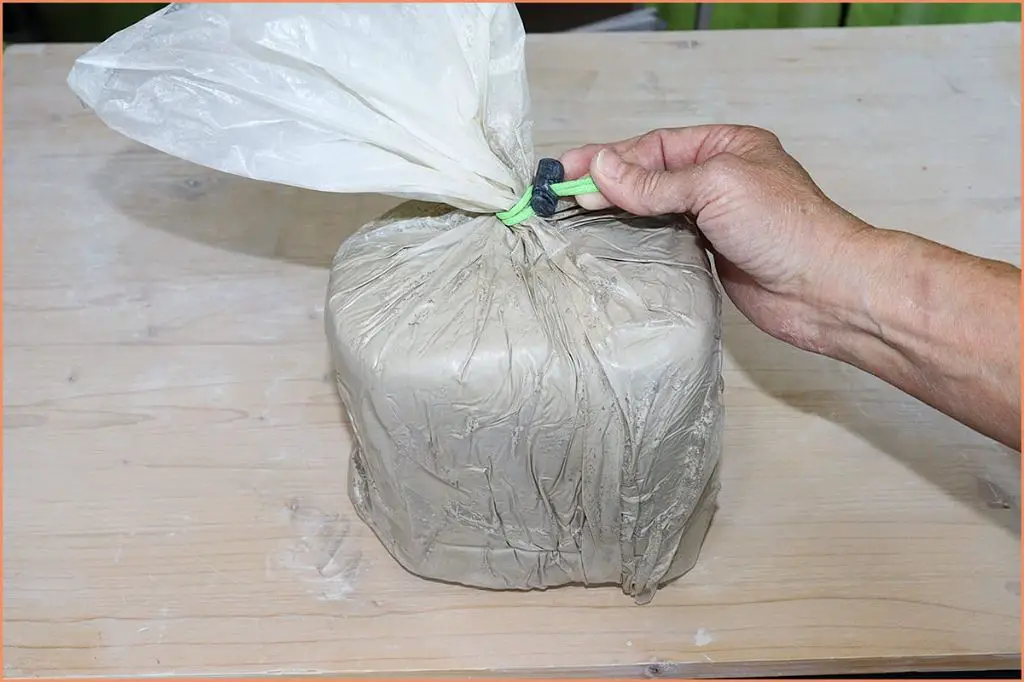How Much Space Do You Need For A Pottery Studio?
A pottery studio is a workspace dedicated to the art of pottery and ceramics. The amount of space needed for a pottery studio depends on several key factors, including the types of equipment used, quantity of materials stored, number of people working, and any retail or classroom spaces.
When determining the right size for your pottery studio, it’s important to consider the main equipment like the potter’s wheel, kiln, and areas for clay storage and glaze mixing. You’ll also need room to maneuver around worktables and store tools and supplies. The studio layout should allow a smooth and logical workflow. If selling work or teaching students, extra space is needed for displays, seating, and customer access.
With some planning and creativity, a functional pottery studio can be set up even in a small home studio of around 200-300 square feet. Larger shared or commercial studios may require 1000+ square feet. The studio size you need depends on the scope of work and activities. Careful space planning allows room for all necessary creative processes.
Workspace Area
The workspace area needs adequate space for wheel throwing, hand building, and glazing stations. For wheel throwing, experts recommend at least 6 to 8 feet of space around the wheel for the wheel itself, splash pans, stool, and elbow room for throwing. For hand building, allow at least 2-4 feet of table space per person. For glazing, make sure there is enough room between the glaze buckets, shelves, and painting area to avoid collisions or spills. Allow extra space if the studio will host multiple artists or students. The Homestead Pottery article suggests allowing 15-20 feet between workstations for multi-artist studios.
According to Karaleigh Ford Ceramics, for a home studio with limited space, positioning the wheel so the splash pans don’t interfere with walkways can help maximize a small area. Strategic storage solutions like shelves over the wheel help utilize vertical space. For a shared studio, allow an entire station per person rather than crowding multiple people around one wheel.
Sources:
https://www.homesteadpottery.com/articles-homestead-pottery/setting-up-a-pottery-studio/
Clay Storage
When designing a pottery studio, adequate clay storage space is crucial to keep clay workable. Raw clay has specific storage requirements to prevent it from drying out. According to [1], raw clay should be stored in sealed plastic bags or airtight plastic containers. The storage area should be cool, dark and not subject to freezing.

Greenware refers to unfired clay that has been shaped. Greenware must dry slowly and evenly to prevent cracking and warping. Greenware drying shelves should be sturdy, adjustable, and able to hold the weight of wet clay pieces. Shelves should be spaced at least 6 inches apart vertically. Good air circulation around the shelves is important. Keeping the greenware storage area slightly humid can help the drying process [1].
[1] https://books.google.com/books?id=CvU0AQAAMAAJ&pg=RA3-PA8&lpg=RA3-PA8&dq=%22clay+storage+requirements%22&source=bl&ots=8ejIx-ff-8&sig=ACfU3U2plRi7CU8d_DEsYZ-ZGU1YiWNkSg&hl=en&sa=X&ved=2ahUKEwj_8frHm7-EAxVREVkFHQUyBV8Q6AF6BAgUEAM
Kiln Room
Proper ventilation is critical for a kiln room. Electric kilns should have at least 12 inches of clearance on all sides for ventilation, with 18-24 inches recommended by most manufacturers (http://www.skutt.com/images/Designing-A-Kiln-Room-1.pdf). Gas kilns require even more space, usually 36 inches clearance to allow enough oxygen for combustion and to dissipate fumes. Raku kilns used for smoking pots often need an exterior vent or chimney. Having windows or vents near the ceiling allows rising heat to escape the kiln room.
In addition to spacing around the kiln itself, the overall kiln room size depends on the number and size of kilns. Allow adequate space around kilns for loading, unloading, and storing ware. The room should accommodate the largest projected kiln size with clearance space. Hardwire electric kilns near a circuit breaker with proper amperage rating. Choose a kiln room location away from flammable materials and high traffic areas. Follow all local fire codes for ventilation requirements.
Glaze Mixing
Glazes are an essential part of pottery, providing color, texture, and protection to ceramic ware. Having a dedicated space for mixing glazes is important in any pottery studio. According to How Much Room Do You Need for a Ceramics Studio?, you’ll need around 50-100 square feet for glaze mixing.
The glaze mixing area should include a workstation with a large table top or counter space for measuring, mixing, and storing glaze ingredients and supplies. Shelving above and below the workstation provides additional storage. You’ll need access to water for mixing glazes. Include a deep sink and plaster trap to catch clay particles when washing up. Proper ventilation and dust collection is crucial when handling glaze chemicals which can contain silica, talc, and other toxic substances. According to Set Up Your Own Pottery Studio, exhaust fans and dust masks are a must.
Tool and Supply Storage
Proper storage for tools, supplies, and materials is crucial in a pottery studio. Having an organized area for accessing equipment and materials will maximize efficiency and workspace (Pottery studio storage ideas – Pinterest, 2022). There are several considerations for tool and supply storage:
Shelving, cabinets, and drawers should be used for storing hand tools, sponges, ribs, trimming tools, and anything else that needs to be easily accessed while working at the wheel or table. Open shelving units are ideal so tools are visible and can be grabbed quickly (Pottery studio storage ideas…, Top 10 pottery studios, n.d.). Drawers and cabinets with labels keep smaller items sorted.
A separate storage area is necessary for glaze materials and ceramic slips. These are often kept near the glaze mixing station. Sturdy shelving should be used to organize glaze ingredients, test tiles, containers, mixing tools, and anything related to glazing. Proper ventilation is needed. Keeping glazes and slips contained avoids potentially hazardous dusts and liquids from spreading through the studio (Top 10 pottery studio storage ideas…, n.d.).
Having ample, well-organized storage makes a pottery studio more functional and efficient. Spending time designing the space with the needs of the potter in mind will maximize productivity.
Cleaning Area
A pottery studio needs a dedicated cleaning area to keep the space clean and safe for working. The cleaning area should have a large sink with a clay trap to capture clay particles before they go down the drain (see https://ceramic.school/how-to-clean-your-studio/ for clay trap recommendations). Leave space next to the sink to park wheel splash pans that collect water and clay scraps from throwing. Having an area to empty and rinse splash pans helps keep the rest of the studio clean.
Install utility sinks or oversized laundry tubs for washing tools, equipment, and reusable rags/sponges. Add high pressure spray nozzles to easily rinse clay off surfaces. Consider installing a sediment faucet filter to protect pipes from clay buildup. Allocate space for drying racks, utility carts, and a hose reel for easy clean-up access. For flooring, use an industrial anti-fatigue mat that is comfortable underfoot and can be easily mopped. Select high quality mops like microfiber flat mops that will pick up clay dust effectively (see https://www.thestudiomanager.com/posts/the-best-cleanup-tools-for-ceramic-and-art-studios).
Office/Retail Space
Having an office and retail space as part of your pottery studio allows you to manage the business side of your studio as well as sell your finished pieces. For the office, you’ll want room for a desk, computer, files, and storage for office supplies. This doesn’t need to be a large area, even just a corner of the studio can work. According to How Much Room Do You Need for a Ceramics Studio?, you can get by with around 50-100 square feet for a small office space.
For retail, you’ll need display shelves to showcase your pottery pieces. The amount of retail space depends on the size of your business. For a starting studio, allocate at least 100 square feet for a retail area according to Pottery Studio Space Rental – Denver, PA. Shelves should be sturdy and adjustable. Consider lighting options to properly highlight your pieces. The retail area should be inviting to customers and allow them to easily view and access your pottery.
Amenities
Having the proper amenities can greatly enhance the studio experience for students and instructors. Here are some key amenities to consider:
Bathroom – Having at least one ADA-compliant bathroom is crucial for accessibility and convenience. Many local building codes will require a restroom if the studio space exceeds a certain square footage.
Lockers – Providing lockers or cubbies allows students to securely store their tools, aprons, and works-in-progress. Be sure to get lockers that are large enough to accommodate bulky bags of clay. You’ll want at least one locker per regular studio user.
Lounge Area – A lounge space allows for community building and lets students comfortably take breaks. Outfit the lounge with couches, tables, a refrigerator, and coffee maker. Make it an inviting area for people to socialize and collaborate.
ADA Compliance – For any commercial space, it is important to follow ADA guidelines for accessibility. Doorways, aisles, bathroom, locker height, andsinks should be wheelchair accessible. Have an ADA parking space outside as well. See:source
Conclusion
When planning out space for a pottery studio, there are several key factors to consider including workspace area, clay storage, kiln room, glaze mixing area, tool storage, cleaning facilities, office space, and amenities. Proper planning of these spaces is crucial to have an efficient and enjoyable studio setup.
For more information on planning out a home pottery studio, check out these helpful resources: Set Up Your Own Pottery Studio | Homestead Heritage and Home Pottery Studio Set Up Guide.
With careful consideration of workspace needs and studio layout, you can create the ideal pottery studio space right at home.


